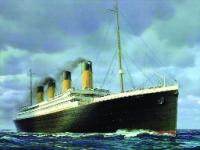Titanic’s rivets
Published in 20th-century / Contemporary History, General, Issue 5 (Sept/Oct 2011), Letters, Volume 19 Sir,—In your last edition (HI 19.4, July/August 2011), Tony Canavan’s ‘Sidelines’ quoted the people of Belfast as declaring that the Titanic had been ‘in perfect condition when it left us’. This may be correct for the workers but not for the designers. Instead of iron, the Titanic was built of steel, which is much tougher than the usual iron, hence the claim of unsinkability. The rivets, however, which held the steel plates together, being of steel, could be put in place only by a large pneumatic machine, and this was too bulky for the curved prow of the ship. So, in that confined space, the plates had to be sealed manually with iron rivets. Even then disaster might have been avoided. But, alas, the iron chosen for these vital rivets was called ‘Best’, whereas they should have used the stronger ‘Best Best’, with the result that they were not strong enough for the iceberg.—Yours etc., COLM CULLETAN
Sir,—In your last edition (HI 19.4, July/August 2011), Tony Canavan’s ‘Sidelines’ quoted the people of Belfast as declaring that the Titanic had been ‘in perfect condition when it left us’. This may be correct for the workers but not for the designers. Instead of iron, the Titanic was built of steel, which is much tougher than the usual iron, hence the claim of unsinkability. The rivets, however, which held the steel plates together, being of steel, could be put in place only by a large pneumatic machine, and this was too bulky for the curved prow of the ship. So, in that confined space, the plates had to be sealed manually with iron rivets. Even then disaster might have been avoided. But, alas, the iron chosen for these vital rivets was called ‘Best’, whereas they should have used the stronger ‘Best Best’, with the result that they were not strong enough for the iceberg.—Yours etc., COLM CULLETAN
















